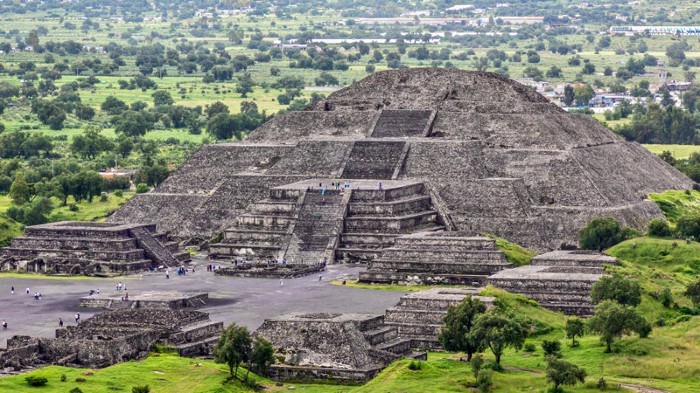3 Reasons American Pyramids Are as Imposing as Egyptian Pyramids
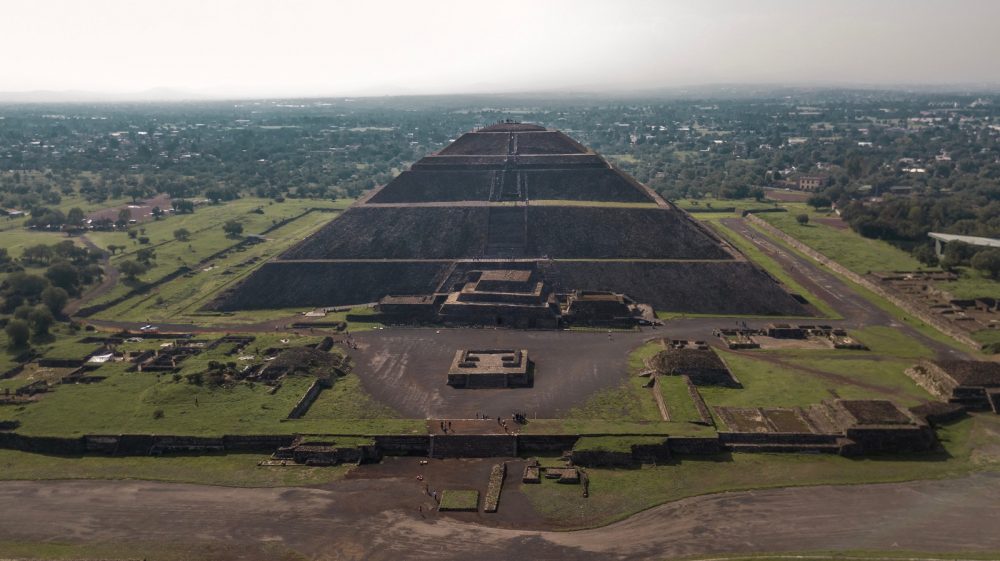
Have you ever wondered where Earth’s most imposing pyramids are located? While many believe these are in Africa, some of the most incredible are located in the American continent.
We are all very well acquainted with the Egyptian Pyramids, but what do we know about other pyramids around the globe? What about the imposing pyramids of the American continent? A few people know that pyramids built on the American Continent are among the oldest and largest on the planet. Without a reason of a doubt, the most famous pyramids are those built in Egypt. Specifically, the Pyramids at the Giza plateau, of which the Great Pyramid of Giza is the most famous. The simple word pyramid draws parallels to the Great Pyramid of Egypt. But Egypt isn’t the only country with pyramids.
Who has the most pyramids?
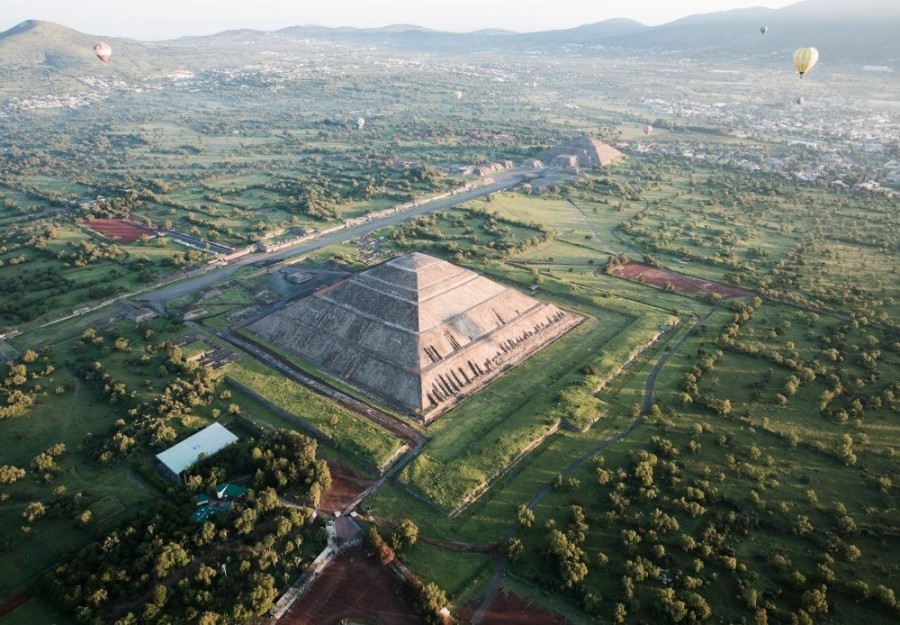
It isn’t even the country with the most pyramids, and it certainly isn’t with the largest pyramid on Earth. That may surprise many people, but the history of pyramids on Earth goes back hundreds of years before the first pyramid of Egypt was built. Nonetheless, if you ask any traveler today which ancient monument made the strongest impression on him, you’d probably get a reply like ” the pyramids of Giza.” Yes, the Pyramids at Giza are a true ancient wonder and certainly a treasure of ancient civilization. The reasons why some people are left awestruck by the Giza pyramids may differ from person to person.
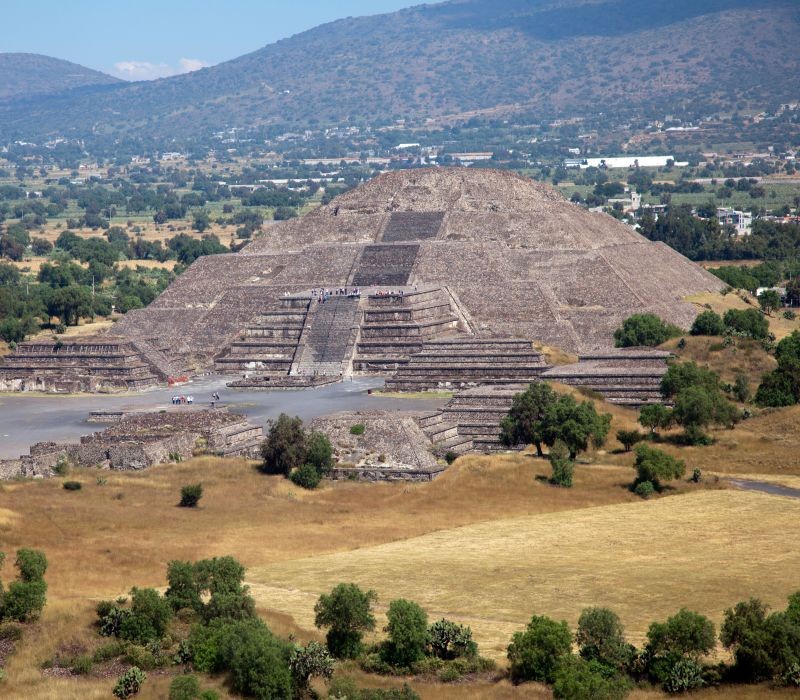
Why the Great Pyramid is a Jewel
Some would say it is because of their massive scale, while others point out their architectural perfection. Some are awestruck by their incredible precision, and those submerging themselves in the massive mystery behind pyramids leave the greatest impression on them. The ancient Egyptian Pyramids are striking monuments not only because of their quantity but because of their quality. Therefore, it is no surprise that the Great Pyramid of Giza, which was thought to have been built around 4,500 years ago, is the only standing wonder of the ancient world. But the Great Pyramid wasn’t the first pyramid of Egypt, and it certainly wasn’t the most awestriking.
Each pyramid is unique
Each pyramid of ancient Egypt was awe-striking in its very own way. The first pyramid of Egypt, the Step Pyramid of Djoser, is unique. Not only is the Step Pyramid at Saqqara considered the earliest colossal stone building in Egypt, but it is also recognized to be the earliest large-scale cut-stone construction. Believed to have been built during ancient Egypt’s Third Dynasty circa 2667–2648 BC, the revolutionary monument was constructed a few hundred years after ancient civilizations halfway around the world in America had already succeeded in building pyramids.
Egypt’s Step Pyramid
Nonetheless, the Step Pyramid of Djoser marked an abrupt departure from previous ancient Egyptian architecture, setting forth the foundations for future pyramid buildings in Egypt. Soon after Djoser’s Step Pyramid, other pharaohs would attempt to replicate what Djoser achieved. Some of them succeeded some of them did not. Pharaoh Sneferu would build the next successful pyramid in Egypt, and the man would go on to perfect pyramid building in Egypt, laying down the foundations for the construction of the greatest pyramid Egypt has ever seen, the Great Pyramid of Giza.
Sneferu, the pyramid builder
Sneferu is considered ancient Egypt’s most proliferated pyramid builder, completing three pyramids: The Pyramid at Medium, the Bent Pyramid, and the Red Pyramid, which would become the third-largest pyramid in Egypt after the pyramids of Khufu and Khafre. The Pyramid of Khufu is believed to have been completed some 4,500 years ago. This means that around 500 years before that, ancient cultures in America already built pyramids. The oldest pyramids in the world are believed to be those in Brazil. Located on the Atlantic coast of southern Brazil, these ancient Pyramids are considered to have been built around 3,000 BC, predating the Egyptian and other American pyramids but several hundred years.
There were thousands of pyramids in Brazil
If we are to look for some of the most ancient pyramids, albeit not as imposing as others in America, then we turn to Brazil. Archeologists have estimated that as many as one thousand pyramids existed in Brazil at one point in history. We have some of the most imposing pyramids in the Ameican Continent, and we also have what is considered the oldest known to scholars. However, today, most of these structures are completely ruined, and most of them are unrecognizable. Some of the Brazilian pyramids are believed to have been massive: archeologists say that ancient Brazilian pyramids were originally more than 50 meters (160 feet) tall, with bases covering around 37 acres. The first Egyptian pyramid, the Step Pyramid of Djoser, is believed to have had a height of around 62 meters.
Back to Djoser and its underground world
Although the size of Djoser’s stone pyramid may not be impressive, what lies beneath it certainly is. More than 4600 years ago, the ancient builders excavated and built a massive subterranean world beneath the pyramid totaling 5.7 kilometers in length. As impressive as it sounds, the pyramid of Djoser and its pyramid complex were built hundreds of years after pyramids were already being built in America. And when speaking about pyramids, one cannot ignore the pyramid city of Caral, an ancient Peruvian metropolis dating back around 5,000 years. Caral is thousands of years older than the earliest known civilization in the Americas, and at around 2630 years old, it is as old as the pyramids of Egypt.
A Peruvian Pyramid City
This ancient Peruvian city’s urban complex is spread over 370 acres and features countless plazas, residential buildings, and pyramids. The largest of the pyramids at Caral is the so-called Pirámide Mayor, which is 150 meters (490 ft) long, 110 meters (360 ft) wide, and 28 meters (92 ft) high. The exact date of its construction continues to elude archaeologists. Although many people believe the Great Pyramid of Giza is the largest pyramid on Earth, it isn’t. Although rightfully impressive, with a total volume of 2,583,283 cubic meters (91,227,778 cu ft), the Great Pyramid is dwarfed compared to a pyramid in Central Mexico. It is one of the most imposing pyramids on the American Continent. If we are to pick out a city with imposing ancient pyramids, then Caral is certainly one.
The largest pyramid on Earth
The Great Pyramid of Cholula is recognized as the most massive archeological pyramid site in the American continent and the largest pyramid on Earth discovered to date. With a base measuring 450 by 450 meters (1,480 by 1,480 ft), the Great Pyramid of Cholula is the largest pyramid and the largest monument ever constructed, with a total volume estimated to be more than 4.45 million cubic meters, effectively dwarfing the Great Pyramid of Giza which has a total volume of around 2.5 million cubic meters. Like many other pyramids (like the Step Pyramid of Djoser), the Pyramid of Cholula is believed to have been constructed in four stages.
A Stepped Pyramid in America
Another ancient city with imposing pyramids in America is Cholula. The construction is thought to have started around the 3rd century BC, lasting through the 9th century AD, just as Djoser’s Step Pyramid, the Great Pyramid of Cholula, comprises six superimposed structures. The massive pyramid is believed to have been dedicated to Quetzalcoatl, the feathered serpent. The Great Pyramid of Cholula has a massive, 8-kilometer-long system of tunnels beneath it. Today, the pyramid may not look like much as the massive structure is overgrown by vegetation. During the Spanish Conquest, the Spanish built a church on top of the structure, not knowing there was a massive pyramid beneath the layers of vegetation.
Cholula, an ancient metropolis
The ancient city where the Pyramid was built was of great importance. Scholars have revealed that Cholula had the second-largest population in Mexico at its peak, with an estimated 100,000 people calling the city home at its peak. According to legend, post-classic Aztecs thought that Xelhua, one of the seven giants of Aztec mythology, built the Great Pyramid of Cholula. Xelhua was a giant of the “time of the universal deluge.” While Cholula is famous because it is home to the largest pyramid on Earth, many ancient sites in Mexico are worthy of mention. One such ancient site is the ancient city of Teotihuacan, which I like to call Mexico’s Pyramid City.
Teotihuacan, an ancient wonder
Located northeast of present-day Mexico City, the ancient city of Teotihuacan is famous for some of the most impressive pyramids in Mesoamerica. At its peak, around the first half of the first millennium CE, the ancient city of Teotihuacan has believed to have been the largest in pre-Colombian America, with a population of around 150,000 people, making it one of the largest cities in the world during its era. Although scholars say the city was most likely established before 100 BC, no single ancient document mentions the city’s construction, who built it, and when it was built. There are no written references that mention Teotihuacan in any way.
Teotihuacan’s Pyramid of the Sun
Scholars argue that some of the earliest buildings at Teotihuacan were most likely completed around 200 BC. The city’s largest pyramid, the Pyramid of the Sun, is believed to have been created around 100 CE, although this is based on pure academic guesswork. We don’t even know the city’s original name. As noted by scholars, the name Teōtīhuacān was given to the pyramid city by Nahuatl-speaking Aztecs long after the city was built and abandoned. The city was already in ruins when the Aztecs found it overgrown by vegetation. Its Nahuatl name can be translated to either birthplace of the gods” or “the place where gods were born.”
The most prominent Toetihuacanese pyramids
Three of the most prominent pyramids at Teotihuacan are the Pyramid of the Sun, the Pyramid of the Feathered Serpent, and the Pyramid of the Moon. The Pyramid of the Sun is one of the largest buildings ever constructed in Mesoamerica, with a total volume of 1,184,828.3 cubic meters (41,841,817 cubic feet). The Pyramid of the Moon is the second-largest pyramid in the city. This pyramid is important because experts argue it covers a structure that dates back further than the Pyramid of the Sun.
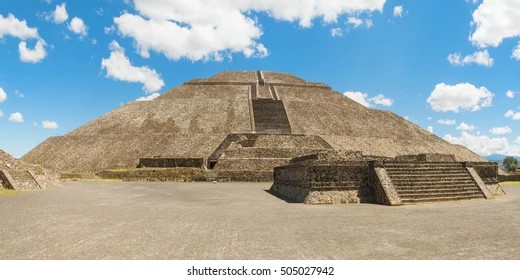
The Feathered Serpent
The Pyramid of the Feathered Serpent is the third-largest pyramid at Teotihuacan. This ancient structure is notorious because it features some of the earliest-known representations of the feathered serpent. Teotihuacan is also famous because its pyramids and other structures are known to have been decorated with sheets of Mica. Scholars have revealed that more than 37 kilograms of Mica–which we use today in electronics, among other things–have been recovered from different structures at Teotihuacan.
Have something to add? Visit Curiosmos on Facebook. Join the discussion in our mobile Telegram group
Related Post
A shocking documentary proves that mermaids do exist
SHOCKING Revelation: Thuya, Mother of Queen Tiye, Was the Grandmother of Akhenaten and Tutankhamun—What Ancient Egyptian Secrets Did She Leave Behind?
Breaking News: Astonishing Discoveries at Karahan Tepe Confirm an Extraterrestrial Civilization is Hiding on Earth, and NO ONE Knows!
Breaking News: Researchers FINALLY Discover U.S. Navy Flight 19 After 75 Years Lost in the Bermuda Triangle!
NASA’s Secret Investigation: Uncovering the Astonishing Mystery of the UFO Crash on the Mountain!
Explosive UFO Docs LEAKED: Startling Proof That Aliens Ruled Ancient Egypt!
